For a young, unseasoned video game developer, nothing quite beats the grand satisfaction of seeing his or her first commercial project through to the end. After many long, hard days and nights of coding, testing and debugging, the light at the end of the tunnel finally approaches, and the pride and expectation of wanting to view the final product on a store shelf is nearly overwhelming. Unfortunately for some, despite having thrown their heart and soul into the work and endured all the stress along the way, that wondrous day of release… never comes. Instead, their heart sinks as they are shuffled off to another project.
 Such was the story for Matt Harmon, the lead designer and programmer of the Sega Genesis action game, It Came From The Desert. An eager young hacker turned professional developer, Matt was put in charge of the entire project and worked feverishly to complete it in good time. However, despite getting the game to a near completed state, he was told that it was over; the game had been shelved indefinitely by the publisher.
Such was the story for Matt Harmon, the lead designer and programmer of the Sega Genesis action game, It Came From The Desert. An eager young hacker turned professional developer, Matt was put in charge of the entire project and worked feverishly to complete it in good time. However, despite getting the game to a near completed state, he was told that it was over; the game had been shelved indefinitely by the publisher.
While the prototype version of It Came From The Desert is legally available for free download directly from Cinemaware’s website, it’s certainly not the style of release Matt had originally hoped for, nor the only one this game deserved. However, while the chances for neglected title’s commercial release may have died many years ago, its story will be immortalized.
Sega-16: How did you get your start with New World Computing?
Matt Harmon: This is a great story. It’s how I became a professional video game developer. Keep in mind this happened in the very early ’80s. As a teenager, I ran a hack-‘n-crack group called “Abyss.” We were famous for converting Giana Sisters to Super Mario Bros. on the Commodore 64, among other things. We would import warez from a Swedish group called Fairlight. (was this too much information? Sue me.) I was working at a Video Super Shop and learned that one of the hackers from Fairlight moved to California and got a job as a video game developer at $8.00 per hour or so. I was making minimum wage ($4.50 or so) and was shocked that I already live here and did not have a video game job, yet one of my connections had! So I looked up local video game companies in the White Pages (we used phone books back then, lol). I found New World Computing, called them up. Amazingly, they offered me an interview (without a web, video game recruitment was very difficult, and companies jumped on programmers)! At age nineteen, I did not have much of an impressive resume, so the day before, I coded, on my Amiga, a 2D side-scroller game demo from scratch, in which you controlled a wizard with a joystick who shot fireballs at floating skulls in a cave. I showed them the demo, and approximately three months later they called me back for a job.
Sega-16: You were designer and lead programmer of the Sega Genesis version of Cinemaware’s It Came From The Desert, a game which ultimately went unreleased. How did you get attached to the project?
Matt Harmon: New World showed me, on a Sega Genesis development system, an already running first level of It Came From The Desert converted to a top-down style game. It was a character with a green shirt, blue jeans, and flame thrower and there were dirt snakes (i.e. ants). That was it, no collision, no levels, no audio, etc, etc. The controls were very slow, and the object sizes did not allow for full gameplay. Clearly the original developer had left, and they needed a replacement for this game to be published by Electronic Arts. So of course, at $12.00 an hour, I took the job. They assigned me an awesome artist – we were the full team. I immediately ran out and bought my first car.
The artist was the amazing talent Jonathan Gwyn, who is now at Double Helix (formerly Shiny Entertainment). I worked with him again much later on the super awesome (sarcasm) Terminator 3 game when Shiny was sent in by Atari (Infogrames) to help wrap.
Sega-16: The Genesis version of It Came From The Desert is noticeably more action oriented and much less story-driven than the original Amiga and PC versions. Was the ‘arcade’ style gameplay specifically requested by management?
Matt Harmon: The Sega Genesis version of It became an arcade style game because it did not appear practical to create a standard Cinemaware type title on a platform that clearly worked best running 2D side scrolling type games (i.e. Sonic The Hedgehog) due to the memory limit on the cartridges, and the animation was sprite based (bit copies not practical and tiling the norm). We kept the concepts of the original prototype but revamped all the graphics and code.
Sega-16: From my play-through of the prototype, downloaded freely from Cinemaware’s website, it seems fairly stable and complete, though short. After only a handful of missions, leading up to the construction and use of a makeshift time bomb, I found myself greeted by the ending sequence. Was this truly everything the game would’ve had to offer, or was there more planned that just never made it?
Matt Harmon: The game is 99.99% complete. I have not played it in over two decades, but I believe there were three chapters, each with three Levels, and each chapter ending with a boss. Each chapter was divided by a town level where you could heal and build weapons. There was some story telling. I am real foggy on this, but there were about five more custom weapons you could build. Each chapter introduced a tougher ant. Yes, this is all that was planned by the development team (which was just me and the artist).
Sega-16: The difficulty in this prototype version seems rather high. Was this a framework for a difficulty selection to be implemented later, or a temporary placeholder, or was the difficulty level purposely ramped up to make up for the overall shortness of the game?
Matt Harmon: We wanted to add a difficulty setting, but due to the very limited QA (me), we could not, and so yes, you guessed it, one of the reasons for the difficulty was to make up for the overall shortness – this was done often in those days, and definitely not so much now (though, Ninja Gaiden on Xbox sure was hard!). If you build the weapons with the parts located throughout the levels, the game gets easier. I could remember the codes if I played it again. For the final levels, use the gun that shoots three blue fireballs at a time.
Sega-16: What sort of development tools did you have available, and what was your overall experience with them like? Did you particularly enjoy working with them?
Matt Harmon: It worked, but all dev kits back then were extremely inferior to the development systems of today. The basic concept was you programmed a battery-backed cartridge which you could unplug from the dev kit (an exposed circuit board), and for retail testing you could plug it into an off the shelf Sega Genesis (keep fresh batteries in the dev cartridge!). I did enjoy it of course, but I remember download times to the cartridge were slow, compiling was slow, and debugging was limited.
Sega-16: Did you have any communication or collaboration with the developers of the original It Came From The Desert computer game?
Matt Harmon: I believe my first week at New World I met one of the Cinemware and/or It Came From The Desert developers and/or producers. It was a brief interaction. He was surprised how young I was and asked if I had interest in working out at the gym – he was reasonably in-shape. It was the last I saw him. I did meet Cinemware developers prior, at their official release party of Rocket Ranger at a local video game store.
Sega-16: Why was the game never published?
Matt Harmon: I hate this part of the story. It’s my very first game, 99.99% finished, and it does not ship. First off, there was one more hand in the pie, near the end, Electronic Arts provided an audio engineer. He provided the music/sound driver and the actual music and sound effects. So, clearly EA was into the game. I remember I liked the music, and I remember there was work on my end to make all the sound effects work right. It was only 99.99% finished, to me, because there was a rare crash bug. We could not reproduce it consistently, and we could have even shipped with it, due to its infrequency, but to me, because of this bug, it was not yet 100% complete. The reason more time was not spent on this rare crash bug, and the reason why we did not ship, is Electronic Arts, if you remember, made a decision at this time to only release sports games. True story. My game was cut because of the success of their Sega hockey games etc. etc., and EA Sports was launched in full force.
Sega-16: Did you ever work on or contribute to any other video games during the 16-bit era which went unreleased?
Matt Harmon: Yes! It is fairly often in the game business a project will start and does not ship, though game developers typically wish they all would ship, especially if they are fun and/or far along. This next one may have shipped, I heard it did in Japan, I did not track it, but at New World there was Might & Magic III ported to the Sega Genesis, and I coded the cool talking head with starfield in the beginning intro, and the landing spaceship animation. But as for games that I know did not ship was Akira on Game Gear. I know you asked about 16-bit era specifically, and though 8-bit, Game Boy and Game Gear were launched while SNES was still hot. The largest 16-bit production that did not ship was Virgin’s Dinoblades – imagine Teenage Mutant Ninja Turtles, but instead, they are Dinosaur-types on roller blades and attack with hockey sticks. The pre-production art was amazing, top notch. Short of a prototype where you could skate around, this game never took off. Virgin had a collapse.
Sega-16: After your stint with New World Computing, you worked for Tahoe Software as programmer of Barbie Super Model for the Genesis and the Game Gear. How did you come to be employed by this company, and what do you remember about them?
Matt Harmon: After I worked on It Came From The Desert, Might & Magic 3 for Sega, and Might & Magic IV on PC (as a tester) at New World, I left the company. I had worked nine months on It, and management rarely ever spoke with me, they were always working on M&M etc., and left the kid in the corner (me) to finish It. I was ambitious and launched my own graphic design company called “CM Graphics” with a friend and partner. We made money, but eventually the “C” of the “CM” (I was the “M”) wanted to move on so I went back into the game industry, and Tahoe snatched me up. I did not do much on the Genesis version of Barbie Super Model, but I did the PC version (which you did not mention) and the Game Gear version from scratch. For Game Gear, there was an artist, and for PC there was an audio engineer. I believe someone wrote an input system for PC or something like that as well. I got some consulting from Todd Hendrix from New World on coding Xmode on the PC for smooth animation – without web and email, it was all about information connections. I also coded the prototype on Sega Genesis at TSP for White Men Can’t Jump – it was a perspective scrolling basketball court and it did not go further then that (crazy license, eh?).
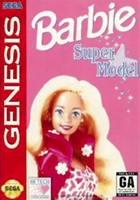 Sega-16: Barbie Super Model was published by the infamous Hi-Tech Expressions. During the course of development did you have any contact with any of their staff?
Sega-16: Barbie Super Model was published by the infamous Hi-Tech Expressions. During the course of development did you have any contact with any of their staff?
Matt Harmon: I did not ever speak with anyone at Hi-Tech, but I was pleased with my performance. I did not do the game design, but I did two ports from scratch in one month each. I was quite young, and saw the texture mapping revolution coming.
Sega-16: Overall, did you enjoy your experiences with Genesis game programming?
Matt Harmon: Yes! I was an Amiga die hard and the Sega Genesis was the same chip, the Motorola 68000. I loved programming it and became quite skilled and knowledgeable with it, clock cycles all memorized etc. I did make SNES games as well, such as lead programmer and lead designer for The Mask by T*HQ. I also did programming for Bass Masters on SNES.
Sega-16: Looking back, is there anything you would have done differently?
Matt Harmon: When you ask me about my first 16-bit games, keep in mind they were my very first experiences in the industry, and I was quite young (teenager to early twenties) at a time when there was no web. I did not get along with my parents due to their divorce, and the game industry kept me alive and happy. I was the envy of my friends many times because I had a career. I watched company politics happen in many extremes and learned a lot from them. What I learned from each shipped game is that when its over, its truly over, and there is a terrible feeling that you cannot go back and do something you wanted to do. So now, when I work on games, I put my heart, more then ever, into them, to make sure that when it ships I can always look back and say “I gave it my all.” Thank you for taking me back to this time period, I loved it dearly and always will. I am more than pleased and happily surprised that people are now able to actually play It.
Sega-16: What has your presence in the video game industry been, following the days of the 16-bit era?
Matt Harmon: At T*HQ I did The Mask and Bass Masters, then to Activision on Interstate ’76 where I was fired due to an argument with the director. Then some work for Vivid. Then I prototyped one of the first DVDs, for DTS – They were afraid DVD was going to fail as the Laserdisc had and also wanted to see the artifacts of the MPEG compression. This was a year before you could even purchase a DVD player. The authoring tools were barely in Beta – I was the first developer to make the now expected animating title menu – in the original DVD spec it did not exist – basically my idea was to simply play a movie in the background instead of the static menu. You can tell it was unintentional in the original spec because of the lack of buffering when the title movie loops (i.e. it pauses before restarting).I then dotCom’d it, eventually working in Hewlett Packard’s server department.
Finally Xbox came out and I wanted to make a pure American game on this American machine (it was frustrating going through Japanese documentation on the original Playstation), which basically means the “urban/hiphop” genre – so I did Street Hoops at BlackOps Entertainment, where I also worked on And1 Streetball, Terminator 3: Rise of the Machines, X-Files: Resist or Server, Knockout Kings, Fugitive Hunter (and the international version, America’s 10 Most Wanted, which actually sold more than Spider-Man and Tony Hawk in Australia at one time. It was one of the first “capture Osama” games, and what was crazy is Osama was designed as the main villain of the game way before 9/11 due to his ranking on the FBI’s Most Wanted chart). I then went public launching Dr. Dre’s daughter Manaj with the documentary Daddy’s Shadow. I also am launching my Grand Theft Auto style trading card game called Street Cred, starring Ice-T – the online version is also operational in-house. I went private again with the properties and am also now developing and producing a new game with BlackOps on a brand new killer engine about the Mayan calendar and the year 2012… I worked on the new Rise of the Argonauts game.
Sega-16: Other than video game design and development, do you have any other passions you’d like to share with us?
Matt Harmon: I release records (moniker “Judge M”), movies, and act in other films as well (The DMV examiner at the end of Dukes of Hazard 2). I am a very passionate equities and currency trader (just released “The Harmon Letter” at my market technical analysis) and do technical analysis for a hedge fund. I wish to go public again as I grow. You can check up on me by viewing my webcam nearly everyday and reading my blog.
Special thanks to Matt for sharing his story with us.

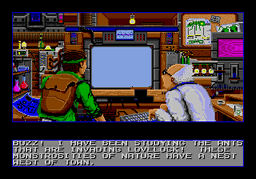
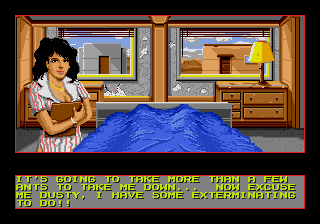
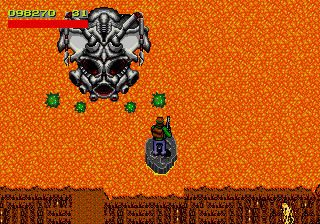
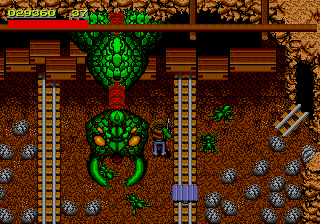
Recent Comments